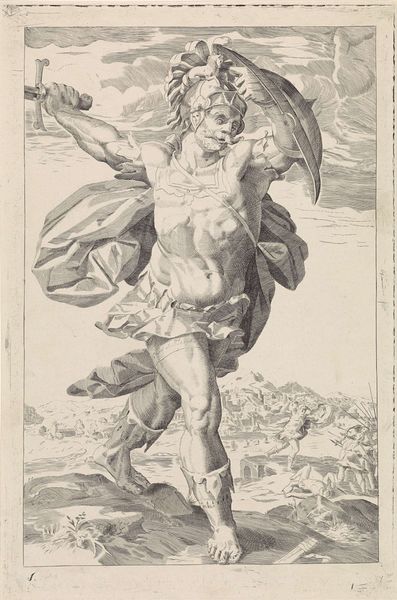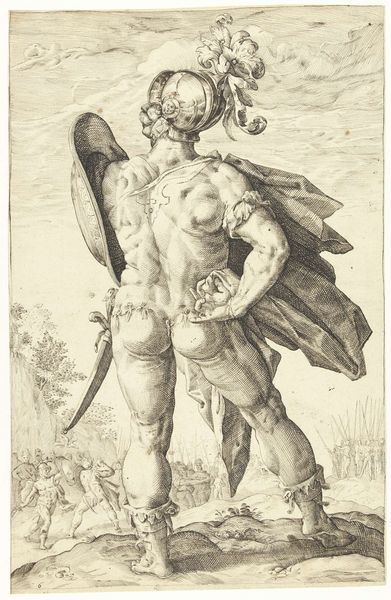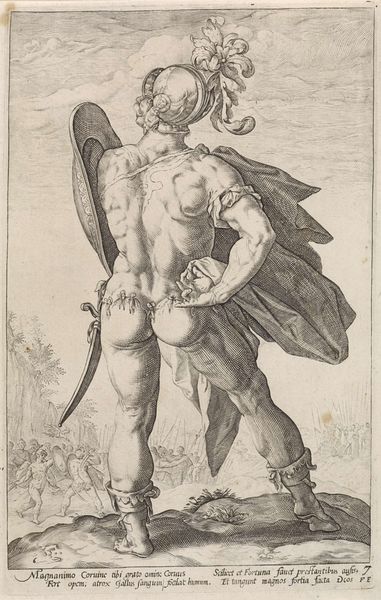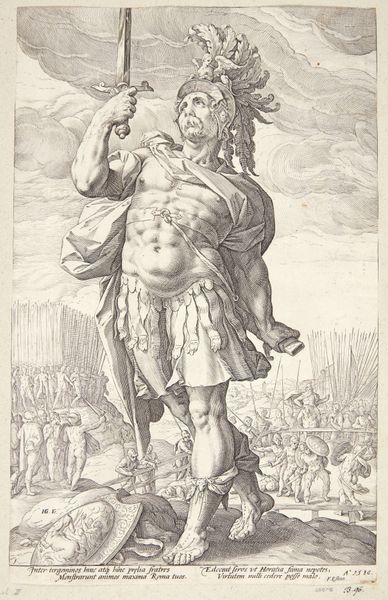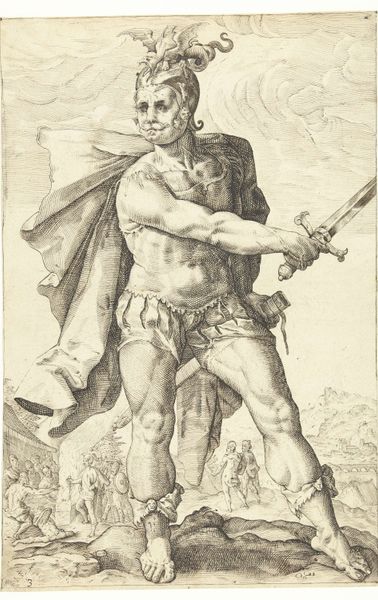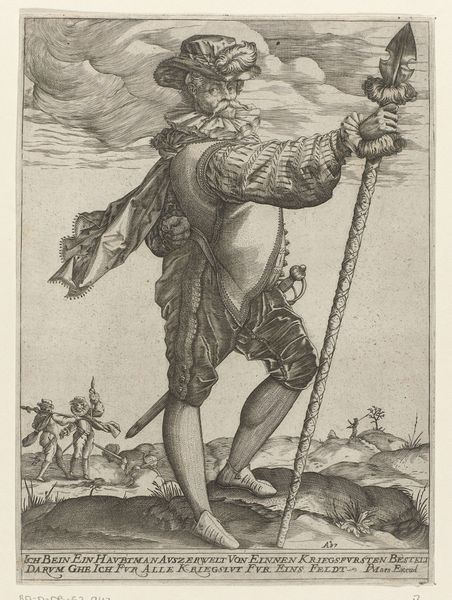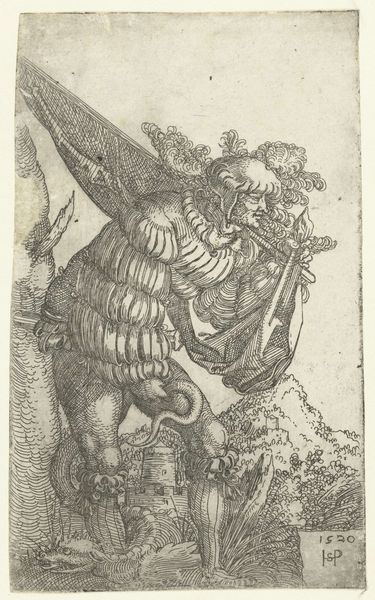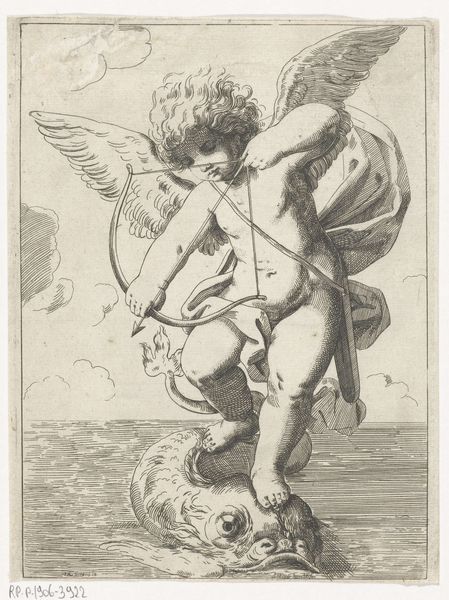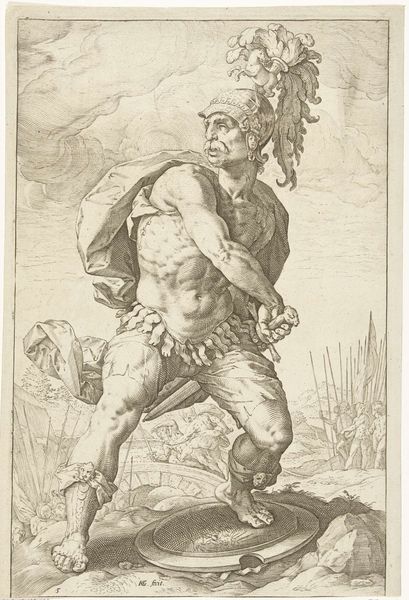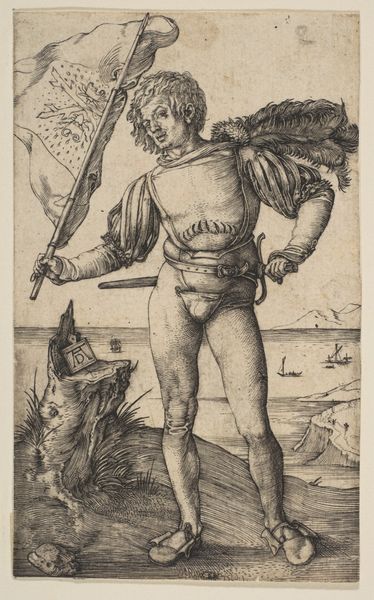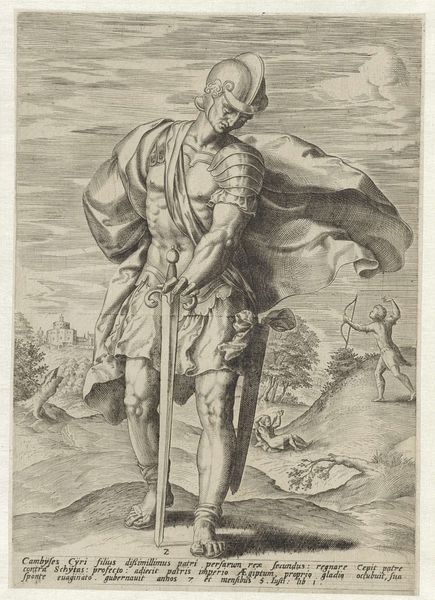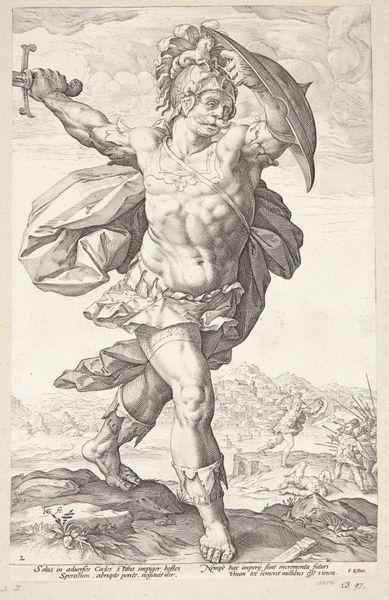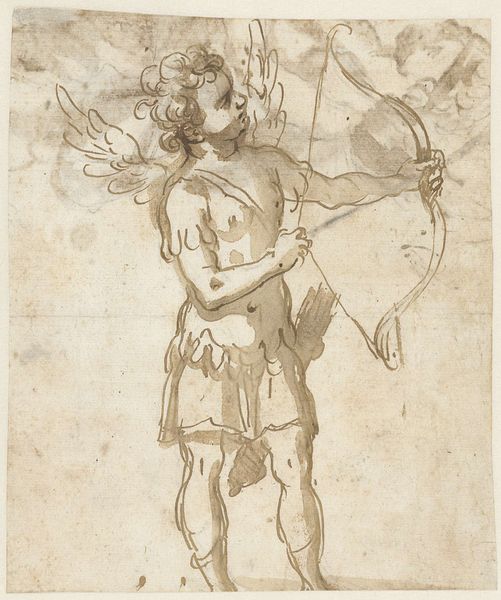
drawing, print, engraving
#
drawing
# print
#
landscape
#
figuration
#
men
#
history-painting
#
northern-renaissance
#
nude
#
engraving
Dimensions: plate: 4 5/8 x 2 3/4 in. (11.8 x 7 cm) sheet: 4 11/16 x 2 13/16 in. (11.9 x 7.1 cm)
Copyright: Public Domain
Curator: It has this quiet power, don't you think? Editor: It does. It's "The Standard Bearer" by Lucas van Leyden, created sometime between 1505 and 1515. It's an engraving, so we are seeing an image meticulously carved into a metal plate and then printed. The work is currently at the Metropolitan Museum of Art. Curator: Yes, he’s an interesting chap. A little theatrical and, dare I say, slightly absurd, but with a kind of quiet stoicism too. The detail in the face gets me every time. It's not quite portraiture, but there is personality there. Editor: It’s curious, isn’t it? This semi-nude figure, carrying a massive flag... it has elements of classical heroic imagery, yet the proportions are off. Is it a comment on military might or a sly parody? And that almost melancholic expression… Curator: Exactly! Is it meant to elevate the idea of duty and valor or subtly undercut it? The flag itself, so prominent, almost feels like a burden he’s reluctantly carrying. The feather on his head, like he's been plucked straight out of the commedia dell’arte...a fool playing hero. Editor: I love the landscape receding behind him. Even in the small scale of the engraving, you get a sense of vastness, drawing you into this tableau vivant. It makes me consider the broader world beyond this figure’s isolated stance. He's stranded between being a hero and a pauper. Curator: Indeed. Van Leyden uses symbolism here. Consider the exposed physique combined with elaborate headdress. There’s a play on classical ideals of the perfect, strong body juxtaposed with gaudy, unnecessary adornments, all to reflect the weight or burden, if you will, on being “heroic”. A rather poignant figure, truly. Editor: It's fascinating how this relatively small engraving invites so many different interpretations. It proves images carry complexities that keep shifting through time. Curator: Exactly. Images are mirrors. The symbols become us. I like that thought. Editor: An excellent note to end on. Thank you.
Comments
No comments
Be the first to comment and join the conversation on the ultimate creative platform.
